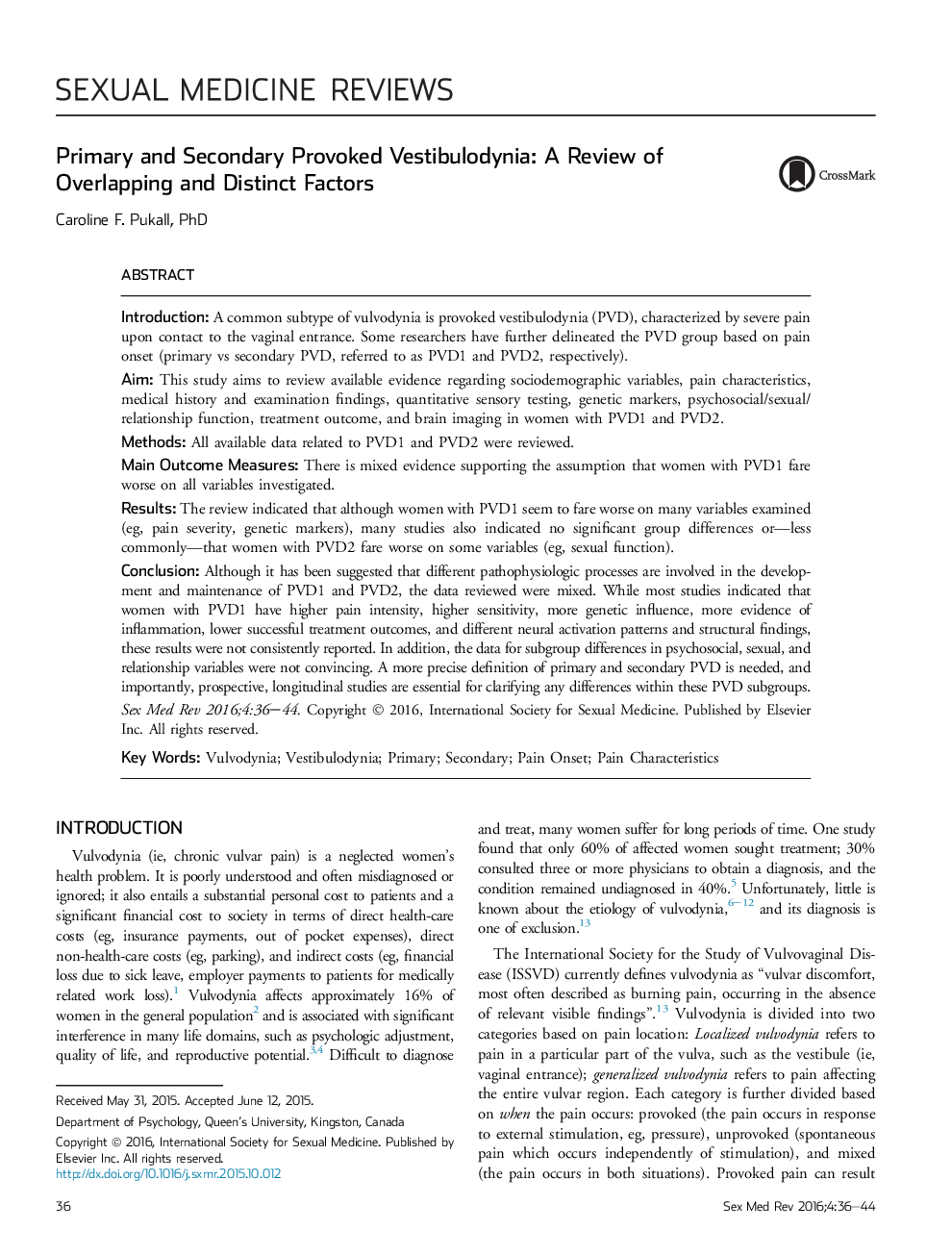| Article ID | Journal | Published Year | Pages | File Type |
|---|---|---|---|---|
| 4274652 | Sexual Medicine Reviews | 2016 | 9 Pages |
Abstract
Although it has been suggested that different pathophysiologic processes are involved in the development and maintenance of PVD1 and PVD2, the data reviewed were mixed. While most studies indicated that women with PVD1 have higher pain intensity, higher sensitivity, more genetic influence, more evidence of inflammation, lower successful treatment outcomes, and different neural activation patterns and structural findings, these results were not consistently reported. In addition, the data for subgroup differences in psychosocial, sexual, and relationship variables were not convincing. A more precise definition of primary and secondary PVD is needed, and importantly, prospective, longitudinal studies are essential for clarifying any differences within these PVD subgroups.
Related Topics
Health Sciences
Medicine and Dentistry
Urology
Authors
Caroline F. PhD,
